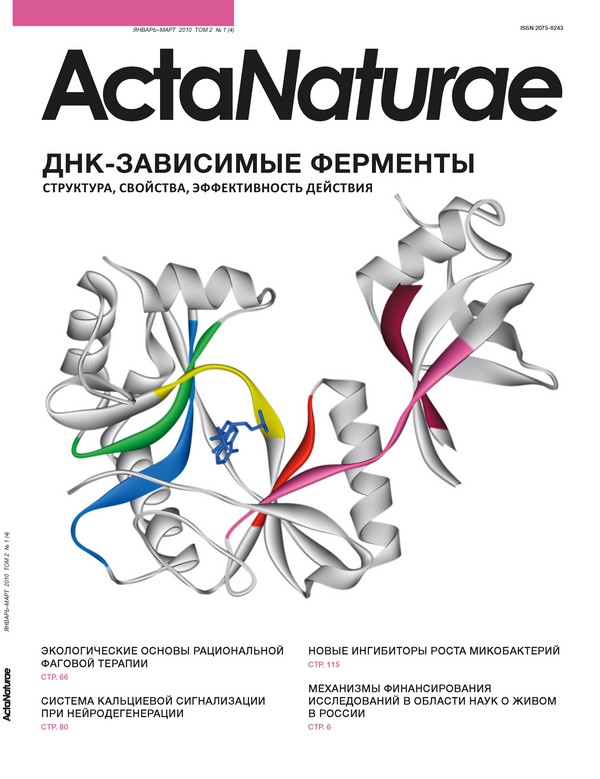Assessment of Formate Dehydrogenase Stress Stability in vivo using Inactivation by Hydrogen Peroxide
- Authors: Savin SS1,2, Tishkov VI1,2,3
-
Affiliations:
- A.N. Bach Institute of Biochemistry, Russian Academy of Sciences
- Innovations and High Technologies MSU Ltd
- M.V. Lomonosov Moscow State University
- Issue: Vol 2, No 1 (2010)
- Pages: 97-101
- Section: Articles
- URL: https://actanaturae.ru/2075-8251/article/view/10775
- DOI: https://doi.org/10.32607/20758251-2010-2-1-97-101
- ID: 10775
Cite item
Abstract
Kinetic studies on hydrogen peroxide-induced inactivation of mutant formate dehydrogenase from Pseudomonas sp. 101 (PseFDH Cys255Ala) suggest a simple bimolecular mechanism for enzyme reaction with the inactivation agent. In the excess of hydrogen peroxide, the decrease in enzyme activity follows first-order kinetics. Therefore, the first-order effective inactivation kinetic constants determined for various FDH forms at a constant H 2O 2 concentration can be used as a quantitative measure of the enzyme stability. It was shown that two cysteine residues located in the active site formate- and coenzyme-binding domains (Cysl45 and Cys255, respectively) make similar contributions to the enzyme stability, while the contribution of Cys354 is insignificant. The inactivation kinetics of wild-type PseFDH, mutant PseFDH Cysl45Ser/Cys255Ala, and FDH produced under stress conditions by bacterium Staphylococcus aureus, higher plants Arabidopsis thaliana, and soya Glycine max, was studied. It was found that the stress-induced FDHs are at least 20 times more stable than the nonstress-induced PseFDH from Pseudomonas sp. 101 grown on methanol.
Full Text
Assessment of Formate Dehydrogenase Stress Stability in vivo using Inactivation by Hydrogen Peroxide×
About the authors
S S Savin
A.N. Bach Institute of Biochemistry, Russian Academy of Sciences; Innovations and High Technologies MSU Ltd
V I Tishkov
A.N. Bach Institute of Biochemistry, Russian Academy of Sciences; Innovations and High Technologies MSU Ltd; M.V. Lomonosov Moscow State University
Email: vitishkov@gmail.com
Division of Chemical Enzymology, Department of Chemistry
References
- Tishkov V.I., Popov V.O. // Biomol. Eng. 2006. V.23. P. 89.
- Colas des Francs-Small C., Ambard-Bretteville F., Small I.D., Remy R. // Plant Physiol 1993. V.102. P.1171.
- Vinals C., Depiereux E., Feytmans E. // Biochem. Biophys. Res. Commun. 1993. V. 192. P. 182.
- Hummel W., Kula M.R. // Eur. J. Biochem. 1989. V. 184. P. 1.
- Hummel W. // Trends Biotechnol 1999. V. 17. P. 487.
- Liese A., Filho M.V. // Curr. Opin. Biotechnol 1999. V. 10. P. 595.
- Tishkov V.I., Popov V.O. // Biochemistry (Moscow). 2004. V. 69. P. 1252.
- Bommarius A.S., Schwarm M., Stingl K., Kottenhahn M., Huthmacher K., Drauz, K. // Tetrahedron-Asymmetry. 1995. V. 6. P. 2851.
- Sadykhov E., Serov A., Voinova N., Uglanova S., Petrov A., et al. // Appl. Biochem. Microbiol 2006. V.42. P.236.
- Tishkov V.I., Galkin A.G., Marchenko G.N., Egorova O.A., Sheluho D.V., et al. // Biochem. Biophys. Res. Commun. 1993. V.192. P.976.
- Odintzeva E.R., Popova A.S., Rojkova A.M., Tishkov V.I. // Moscow Univ. Chem. Bull. 2002. V. 43. P. 356.
- Yamamoto H., Mitsuhashi K., Kimoto N., Kobayashi Y., Esaki N. // Appl. Microbiol Biotechnol 2004.
- Slusarczyk H., Felber S., Kula M.R., Pohl M. // Eur. J. Biochem. 2000. V.267. P.1280.
- Colas des Francs-Small C., Ambard-Bretteville F., Darpas A., Sallantin M., Huet J.C., et al. // Plant Physiol. 1992. V. 98. P. 273.
- Resch A., Rosenstein R., Nerz C., Gotz F. // Appl. Environ. Microbiol 2005. V. 71. P. 2663.
Supplementary files







